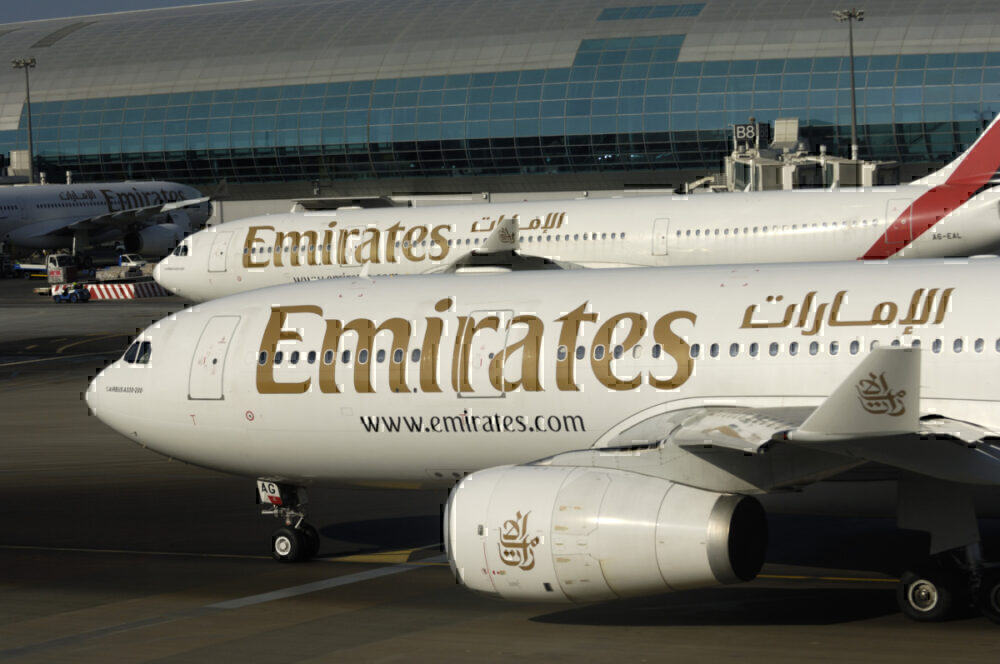Over an extended period of time, many (but not all) airline fleets shift and evolve in an effort to adapt to changing aviation markets while at the same time staying as efficient and modern as possible. It shouldn’t be a surprise that the Dubai-based Emirates wasn’t always an airline with only two types of aircraft. While it’s never been ultra diverse, you might be interested to learn about the history of Emirates’ fleet.

The early years
In 1985, Emirates operated its flights from Dubai to Karachi (Pakistan) and Mumbai (India), using a Boeing 737 as well as an Airbus 300. These jets were actually wet-leased from Pakistan International Airlines (PIA). Additionally, the airline had two Boeing 727-200s, which came from the Dubai Royal Family.
In July of 1987, Emirates took delivery of its first owned aircraft as A6-EKA, an Airbus A310-304, flew from Toulouse to Dubai. The airline would have a total of 14 A310s and seven A300s.
According to Airfleets.net, the lone 737 went back to PIA in 1987, while the 727s would leave the airline in the mid-1990s. These would be the only narrowbody aircraft that Emirates would operate as part of its mainline fleet (we’ll talk about its executive A319 later!).




Going further with the twin-engine widebody
In 1992 Emirates placed an order for seven Boeing 777s with seven options. The airline says that this move signaled “a vote of confidence for the industry [that was] hard hit by the first Gulf War.” The earliest 777s would join the fleet around 1997, and deliveries would continue through the following decade. They would be a mix of -200s, -300s, and -300ERs.




Just a few years later, in 1999, the airline would take delivery of its first A330-200. The airline would take 29 of these over the years, with all of them leaving the fleet around 2015.
Emirates would go on to order many more 777s as the type would go on to become a core part of the fleet. Most of this news came in 2005 when it made history with an order for 42 Boeing 777s in a deal worth $9.7 billion ($12.87 billion in 2020). This was the largest-ever 777 order at the time. Today, Emirates is the world’s biggest operator of 777 aircraft. The airline now operates 142 of the type – which mainly consists of -300ERs but also includes some -200LRs.




The introduction of quad jets
Emirates received its first A340-500 in 2013. This was to be the first of 10 to fly for the airline. It also leased eight A340-300s. Their last A340 was finally retired in 2016, taking its last flight from Kabul to Dubai.




Of course, Emirates’ most substantial quad jet investment would be in the Airbus A380. In 2000 the airline became the first to sign up for the superjumbo, ordering seven with options for five more at the Farnborough Air Show.
The earliest of the A380s were delivered in 2008, and Emirates has been steadily taking delivery of the jet ever since. It now has a total of 115 with eight more on the way. However, rumors have been circulating that some of these may be canceled.
The carrier’s A380s are further divided into three different configurations:
- A three-class long-range (517 passengers)
- Three-class ultra-long-range (489 passengers)
- And a high-density two-class long-range (615 passengers)
Emirates is widely considered responsible for keeping the less-than-popular program alive. Emirates’ decision to cancel orders in 2019 while showing little interest in updated variants led to Airbus shutting down A380 production. This will take place once the final aircraft are delivered in the next year.




We should note that Emirates’ cargo wing, SkyCargo does operate the 747. However, the Queen of the Skies has never been part of its mainline passenger fleet.
Looking to a more diverse future
Perhaps realizing the lack of flexibility of its two-type fleet strategy, Emirates is looking to have a more varied fleet in the future. In the next decade, it seems like the carrier will be operating as many as five different types at the same time:
- Boeing 787
- Boeing 777 (both old and new variants)
- Airbus A350
- Airbus A330neo
- Airbus A380
In 2013, Emirates announced a landmark order for 150 Boeing 777X aircraft valued at $76 billion ($83 billion in 2020), with additional 50 purchase rights. The Dubai-based carrier wanted to obtain 35 Boeing 777-8s and 115 Boeing 777-9s.




However, six years later, Emirates would reduce its order for the delayed 777X by 24 planes to 126, swapping them for 30 787 Dreamliner jets valued at $8.8 billion at list prices.
Emirates’ decision to cut A380 orders in 2019 wasn’t a cancelation as much as it was a swap. In fact, the aircraft swap is comprised of 40 A330-900s and 30 A350-900 aircraft. This came at a list price of US$ 21.4 billion.
When we first reported on this Airbus swap, the A330s were to be delivered in 2021, with the A350s following in 2024. It’s unknown if current global events will change any of these plans in the short term.
On the Boeing side, Emirates was supposed to start taking delivery of its massive 777X order in 2020. However, program delays pushed this back to 2021. Now, further delays mean that the carrier won’t get its first 777X until 2022.




If we want to be thorough, we have to mention the single Airbus A319. Launched in 2013, Emirates makes the aircraft available for VIPs, organizations, and other uses for high wealth individuals who want the full Emirates experience without actually flying commercial.




Were you surprised by any of the fleet history presented in this article? Let us know in the comments.



